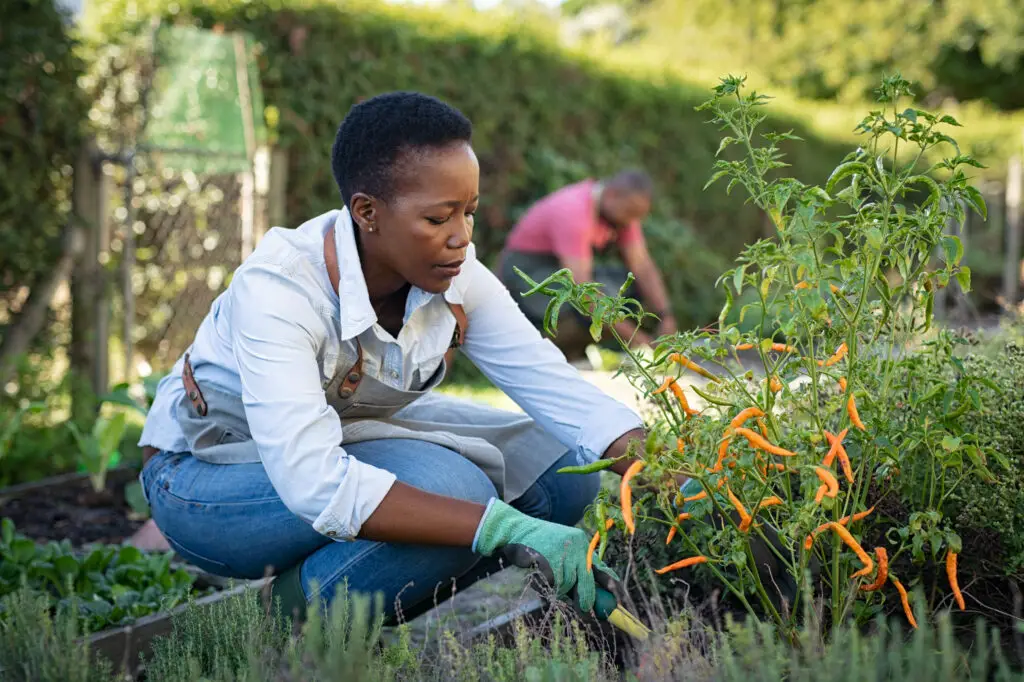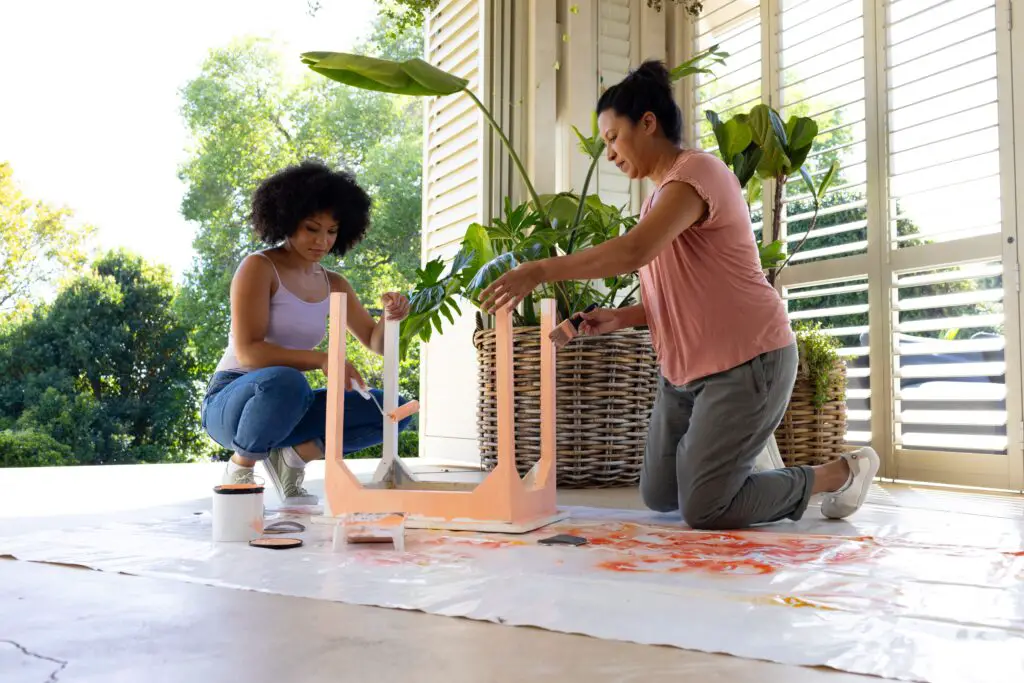1. Thrifting Like a Pro

For generations, Black communities have mastered the art of making a dollar stretch, turning secondhand shopping into an everyday necessity. Whether it was hand-me-downs from older siblings or carefully curated finds from church rummage sales, thrifting was a way of life long before it became a hipster trend. With limited access to high-end fashion and mainstream retail spaces, Black families developed a keen eye for quality, learning to transform vintage pieces into stylish, one-of-a-kind outfits. It wasn’t about looking trendy; it was about survival, creativity, and resourcefulness shares WENY.
Now, thrift stores, consignment shops, and “sustainable fashion” influencers have turned what was once a necessity into a billion-dollar industry. People flock to Goodwill and estate sales, bragging about their “vintage finds” while completely overlooking the history behind this practice. Social media is flooded with thrift hauls, but few acknowledge how Black communities perfected the skill of repurposing and restyling clothing out of pure necessity. The difference? For many, it’s a hobby, but for Black families, it was often the only option adds the Detroit News.
2. Protective Hairstyles

Before TikTok and YouTube tutorials made box braids, cornrows, and locs a viral sensation, Black folks were perfecting the art of protective styling out of necessity. These hairstyles weren’t just about looking good; they were about preserving the health of natural hair, reducing breakage, and saving time in daily routines. With limited access to mainstream hair care products designed for textured hair, Black communities leaned on ancestral knowledge, passing down techniques that kept hair strong and beautiful. Styles like Bantu knots and twists have been part of African traditions for centuries, long before they became Coachella trends says BBC.
Fast-forward to today, and suddenly, celebrities and influencers are rocking the same styles, calling them “fashion-forward” or “boho chic.” Braids and locs are praised on runways but still face discrimination in workplaces when worn by Black professionals. While some people are just discovering the beauty of protective styles, Black communities have always known their power. It’s more than a look—it’s culture, heritage, and a necessity that kept hair healthy in a world that wasn’t always accommodating shares Refinery29.
3. Home Gardening and Urban Farming

Long before farm-to-table became a movement, Black communities were growing their own food out of sheer necessity. In many areas, grocery stores were scarce, and fresh produce was a luxury, forcing families to rely on home gardens for sustenance. Whether it was a small backyard plot or a few potted plants on the porch, growing vegetables, herbs, and fruit was a way to ensure access to nutritious meals. Knowledge about soil, seasons, and plant care was passed down, turning necessity into expertise.
Today, urban gardening is considered a “green” lifestyle choice, with influencers boasting about their homegrown tomatoes and kale smoothies. Meanwhile, Black communities have been doing this for generations, not for Instagram likes, but because food security was a real concern. Community gardens, once dismissed as makeshift solutions in underserved areas, are now celebrated as innovative urban planning. It’s ironic that something once seen as a sign of poverty is now a symbol of sustainability.
4. Upcycling and DIY Furniture

Making the most out of what you have has always been second nature in Black households. When buying new furniture wasn’t an option, families found ways to refurbish, repaint, and repurpose old pieces. A worn-out dresser became a statement piece with a little sanding and fresh paint. Old crates were turned into shelves, and fabric scraps transformed tattered chairs into something stylish. What some see as DIY, Black communities saw as making ends meet with creativity and skill.
Now, interior designers and lifestyle bloggers call it “upcycling” and charge top dollar for furniture that looks distressed on purpose. Pinterest is filled with tutorials on repurposing vintage pieces, but Black families were doing it long before it was trendy. Not because it was fun, but because throwing something away wasn’t an option. The same ingenuity that made homes feel stylish and comfortable despite financial hardships is now a booming industry.
5. Meal Prepping and Budget Cooking

Stretching ingredients and making meals last was an art form in Black households long before meal prepping apps and budget-friendly recipe blogs existed. Cooking in bulk, freezing leftovers, and creating new dishes from scraps weren’t trends—they were survival tactics. A pot of beans could last several days, and yesterday’s cornbread became today’s stuffing. Creative substitutions were a must, whether it was swapping out expensive cuts of meat for flavorful, slow-cooked options or turning kitchen scraps into a full meal.
Now, influencers sell meal-prep guides, and budget-friendly eating is seen as a trendy way to “maximize efficiency.” Meanwhile, Black families have always known how to make a meal stretch without sacrificing flavor. Dishes like gumbo, collard greens, and oxtail stew were born out of necessity, using affordable ingredients to create something rich and satisfying. The difference is, for Black communities, it wasn’t about saving time—it was about making sure everyone ate.
6. Side Hustles and Entrepreneurship

For Black communities, having multiple streams of income wasn’t just a trendy way to “grind”—it was often the only way to survive. Job opportunities were limited, and financial security was never guaranteed, so hustling became second nature. Whether it was braiding hair, selling homemade products, or running an informal catering business, people found ways to make ends meet. The idea of being your own boss wasn’t a luxury; it was a necessity when traditional employment wasn’t always welcoming.
Fast-forward to today, and entrepreneurship is celebrated as a lifestyle choice, with business coaches and startup gurus encouraging people to take control of their finances. But Black communities have always known what it takes to build something from the ground up with little to no resources. The gig economy may be new to some, but side hustling has been a way of life for generations. The difference is that now, it’s marketed as a self-improvement trend instead of a survival skill.
7. Community Care and Mutual Aid

Long before the term “mutual aid” became popular, Black communities were practicing it daily. Neighbors took care of each other’s kids, families pooled money to help with rent, and food was shared with those in need without hesitation. When systems failed, people created their own safety nets, relying on each other rather than waiting for outside help. Bartering, babysitting, and supporting small businesses within the community were common practices that kept neighborhoods afloat.
Now, social media highlights mutual aid networks as a progressive concept, but Black communities have been doing it for centuries. Before GoFundMe and crowdfunding platforms, there were rent parties and church collections. It wasn’t called activism; it was simply taking care of your own. What was once a quiet, everyday act of survival is now seen as a revolutionary approach to community building.
